Customer retention is the key to fostering genuinely loyal customers. These customers make more purchases than one-time shoppers, promote your brand to their networks, and become your best brand advocates. If customer retention wasn’t already on your mind, it needs to be!
Let’s take a look at some tried-and-tested customer retention practices and some brands that are putting them into action with 10 examples of customer retention campaigns.
Promote your new product releases
To keep customers around, you need to give them a reason to come back and shop with your brand again. One of the best ways to do this is by consistently adding new products to your stock and promoting these product releases. This will keep customers excited and offering your most loyal customers the chance to try them out first is a great way to show them you care about them!

It’s best practice to let customers know about these new products in a variety of ways like adding a “new releases” section on your website, as well as on social media, email campaigns, or giveaways. Take sunglass brand Komono for example— it has a dedicated section on its homepage for “New Arrivals” with calls to action (CTAs) on each product displayed to “shop now”.
New product releases are a great way to retain customers, but only if they know about them.
Inspire customers with great brand values
When you think about some of your favorite brands, what is it about them that you love? Maybe they have great products or awesome customer service, but in a lot of cases it’s what that brand stands for that draws you to it.
A great way to foster loyal customers is to promote brand values that resonate with them. This is especially important for brands trying to stand out from the crowd of online ecommerce stores. Including some type of corporate social responsibility in your brand’s core is a great customer retention tool.
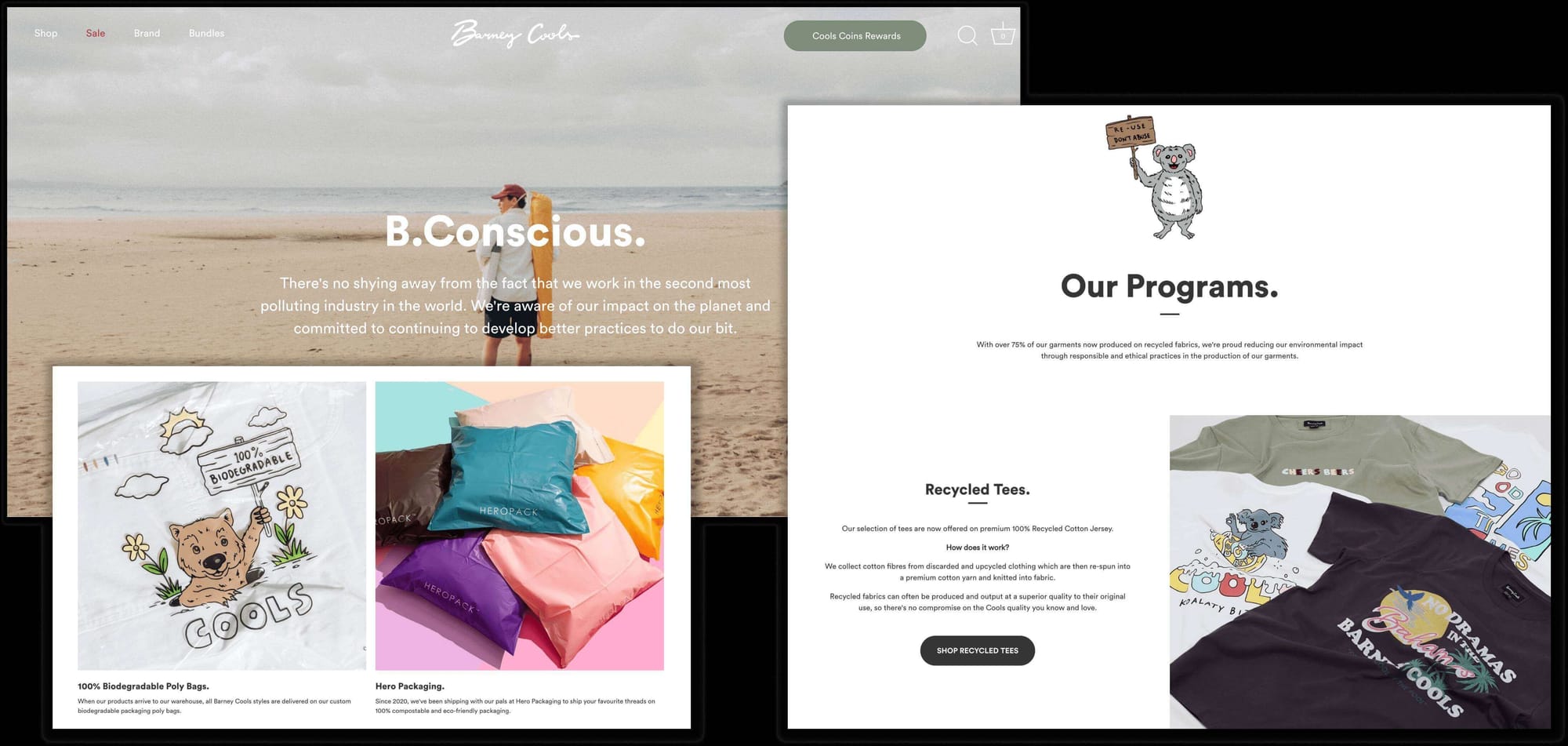
Barney Cools is an Australian lifestyle clothing company with a strong environmental commitment. On its B.Conscious website page, it acknowledges the harmful impact the clothing industry has on the environment and informs its customers what it is actively doing to combat this. It outlines initiatives like using recycled materials, biodegradable packaging, and supporting various NGOs and charities. This emphasis on ethical products that are not only good for their customers but also for the environment is what sets Barney Cools apart from its competitors

Build a strong brand community for customers to join
Customers want to feel like they are a part of an exclusive group when they shop with you and wear, eat, or use your products. This is where building a strong brand community based on your brand values can come in handy. Let’s take a look at Outrun the Dark, a running accessory brand with an emphasis on mental health. Beyond its products, this brand recognizes that runners are one of the most community-driven customer groups and runs with that through its community-building, and customer retention campaign.
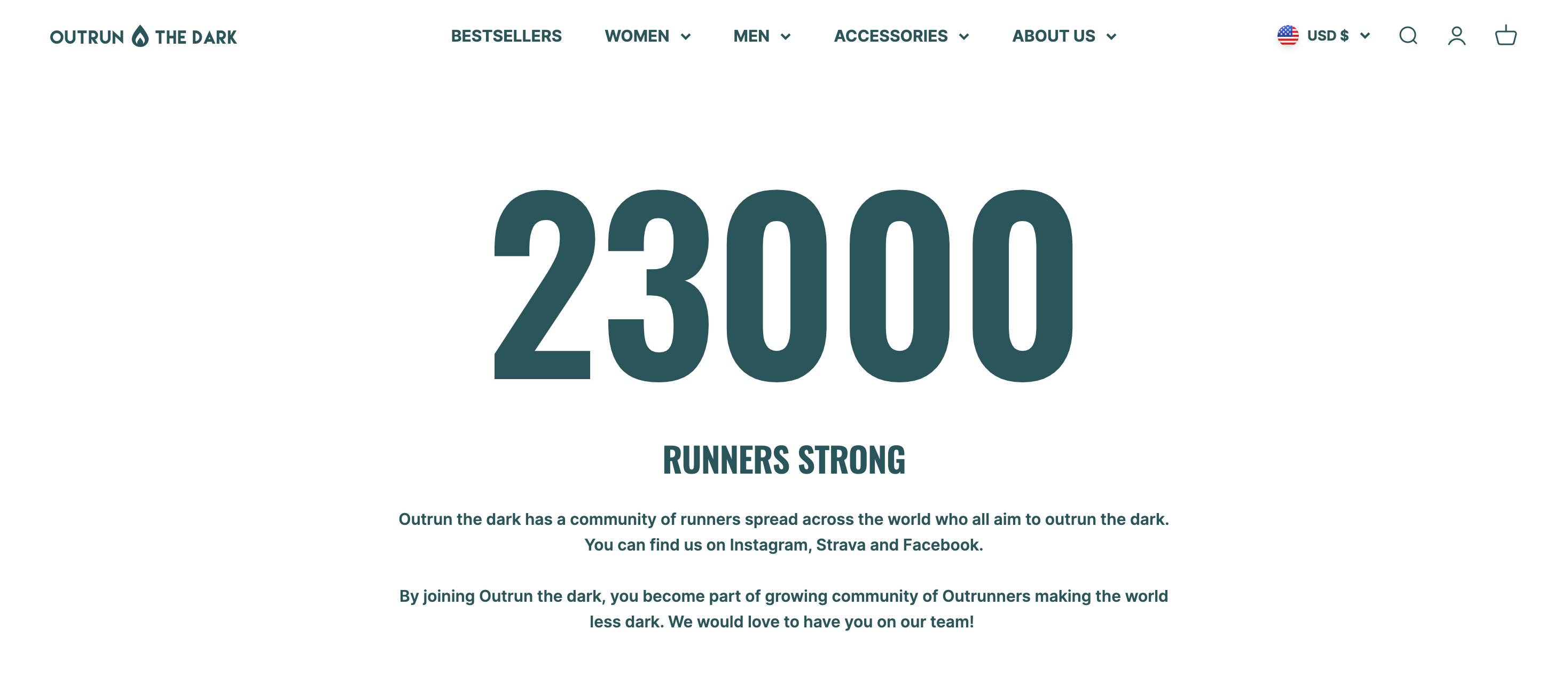
Outrun the Dark has a Community page on its website with a live count of all its members across Instagram, Facebook, and Strava, which is a popular mobile running app. By leveraging Strava, the brand is meeting its customers where they already are and providing an outlet for its customers to connect to, support, and engage with one another.
This running brand goes the extra mile by sharing the founder’s struggle with mental health struggle and how running became a positive outlet for him. After sharing that inspiration on Instagram, community members opened up and shared their journies in the comments. When you can become engrained in a customer’s life like this on a personal level, you know your customer retention campaign is working.
Cater to your specific market if you’re a niche brand
When you fulfill a specific need for customers in a niche market, you have a high chance of retaining those customers. This is why identifying who exactly your ideal customer is and where you can reach them is so important for niche products.
Let’s take a look at a keyboard accessory brand, Osume. Founded by 3 mechanical keyboard enthusiasts, this minimalist tech brand targets consumers who are looking for aesthetically pleasing keycaps that are built to last. Osume understood that its customers consist of gamers and techies and created a Discord community to interact with its community.
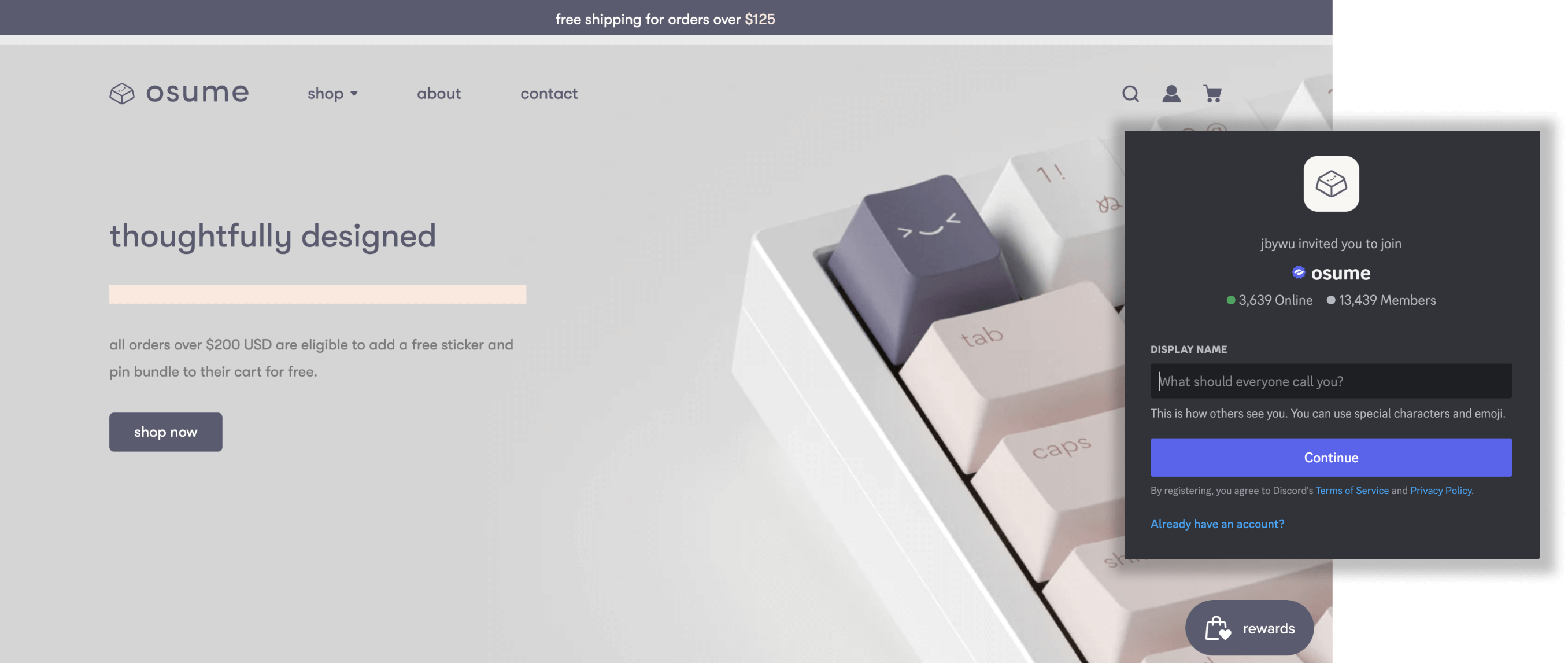
As a brand that has a very specific audience, Osume brands itself as a modern take on the outdated method of purchasing keycaps. Its website reads, “We felt that the traditional model of purchasing the newest and coolest custom keycaps was patience-testing, grossly expensive, and never readily available. We set out to solve all three of these problems with Osume.” As a brand that’s fulfilling a very specific niche need, it has been able to foster a group of loyal customers.
Incentivize customers with a loyalty program
If you offer a loyalty program to your customers, you’re already one step ahead of your competitors in the customer retention game. Giving shoppers the chance to earn valuable rewards is a great way to motivate them to continue engaging with your brand to rack up points.
Men’s skincare brand Lumin offers an easily accessible loyalty program on every page of its website through a launcher and panel. It also has a dedicated loyalty program explainer page outlining every step of its Luminary League rewards program. Through branded colors, icons, and VIP tier names, Lumin makes the earning experience fun and engaging as any great customer retention campaign should be!
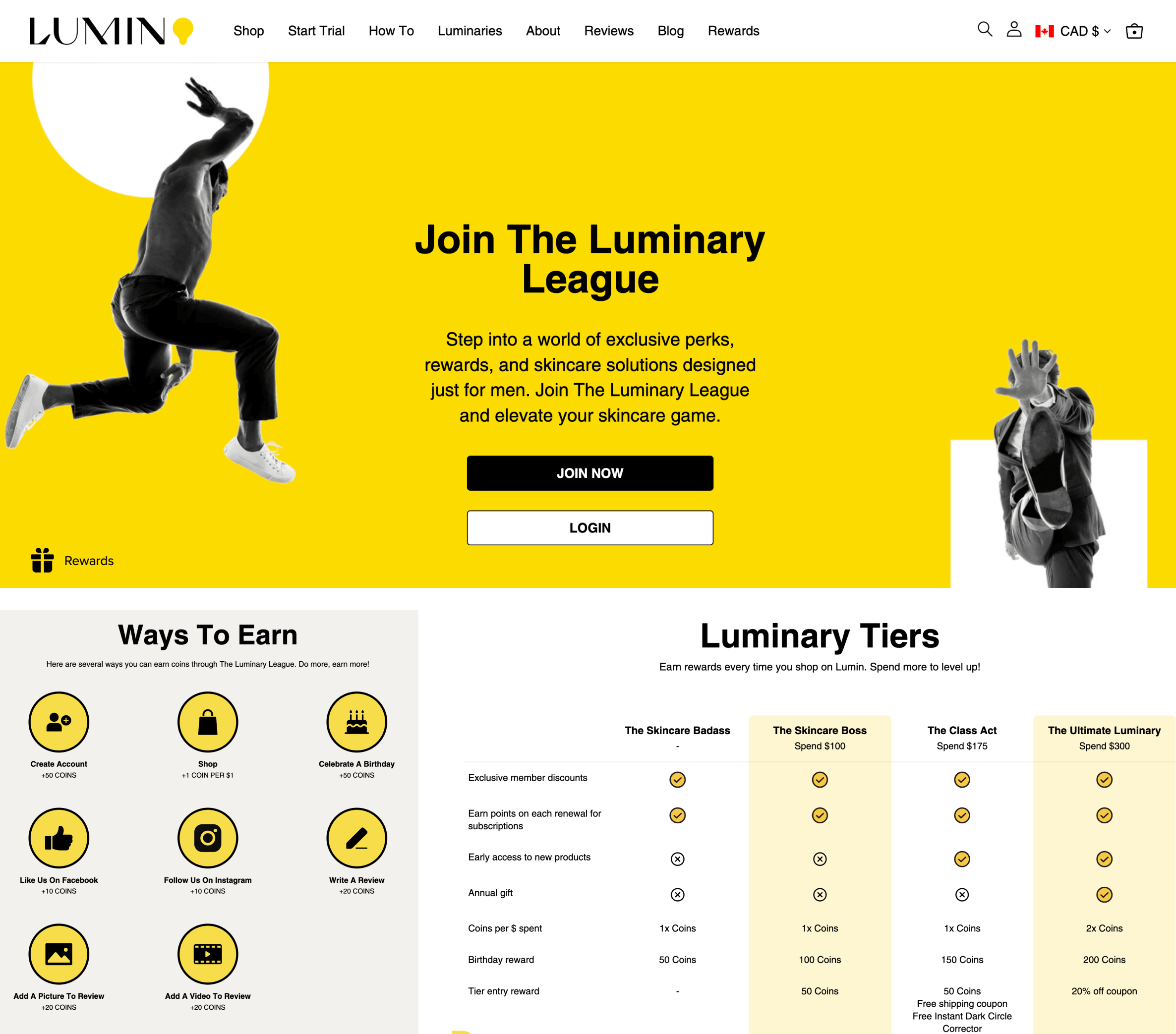
Lumin offers points, a tiered VIP, and a referral program to maximize its customer retention strategies. Points and VIP programs work great to retain customers and encourage them to make repeat purchases while referral programs are a sustainable customer acquisition tool based on the power of peer-to-peer sharing.

Allowing customers to redeem their hard-earned points and referrals for great rewards gives them a reason to return to your store, which is why loyalty programs are an essential customer retention tool.
Challenge customers with gamification
If you already have a loyalty program, one of the best ways to retain your customers is to make the customer loyalty experience fun! Using gamification or adding game mechanics to your website or loyalty program increases motivation, engagement, and retention, which keeps your customers interested for longer.
You can gamify your loyalty program with something as simple as progress bars—when customers can visually see how close they are to earning their next reward, they'll be more motivated to continue engaging with you to earn enough points to redeem rewards.
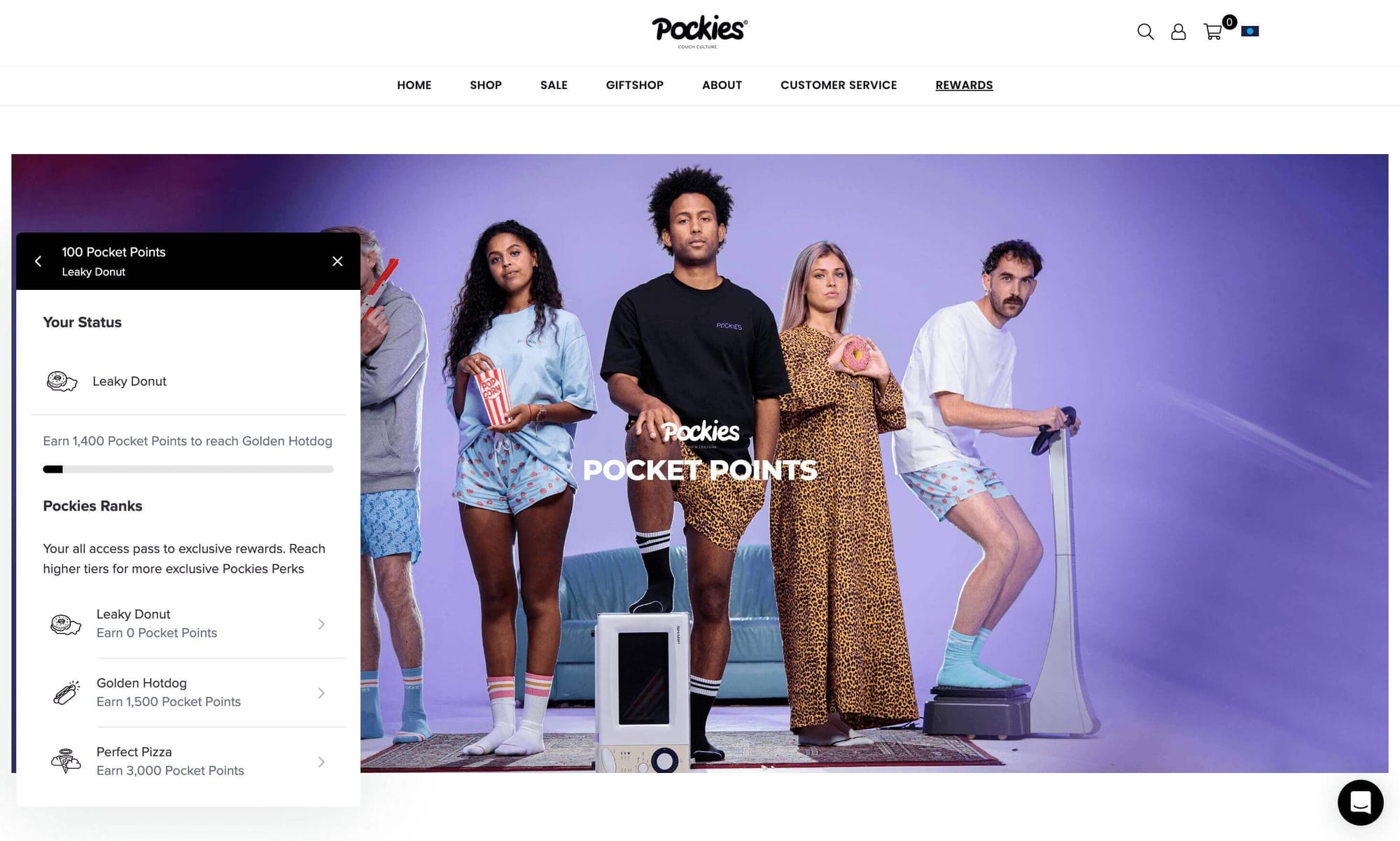
Adding VIP tiers to your loyalty program is another great way to do this since customers are challenged to earn enough points to level up to the next tier—bonus points for on-theme, quirky names that put a smile on customers’ faces. Comfy loungewear brand Pockies checks all of these boxes with its Pocket Points loyalty program. Pockies has combined several gamification strategies by using a tiered reward system, progress bars, and funny VIP tier names like Leaky Donut, Golden Hotdog, and Perfect Pizza that all tie directly into its “couch culture” ethos. All of these customer retention campaign strategies allow customers to see how close they are to the next level.
Gamification techniques are a great way to motivate customers to continue engaging with your brand long-term.
Lock-in customers with subscriptions
A surefire way to retain your customers is to lock them in with a subscription-based business model. This gives shoppers the chance to pay for a recurring product delivery that occurs weekly, bi-weekly, monthly, or whatever they decide. This makes it simple for customers who know they want to repeat purchase your products but don’t want to work on having to order themselves within a specific timeframe.
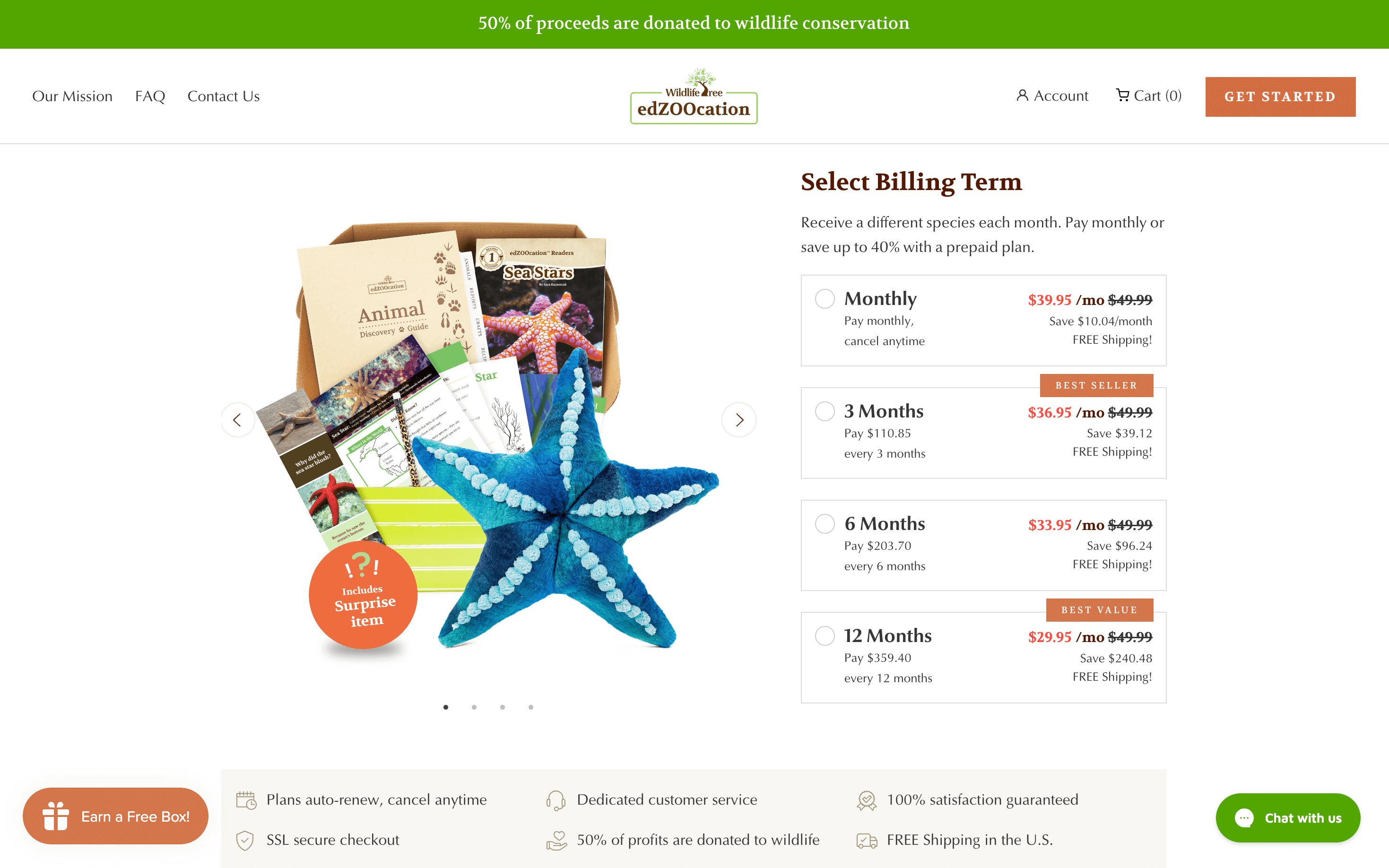
edZOOcation is an animal activism brand that sells wildlife subscription boxes for children. Parents can fill in their preferences such as their children’s age and how frequently they want to receive boxes—monthly, every 3 months, semi-annually, or annually. By giving customers the ability to customize their purchase frequency, edZOOcation can retain customers on their terms and increase purchase frequency if customers decide to upgrade at any point. Measuring customer retention metrics like this one is important to track your brand’s success.

Subscription boxes like these are a great customer retention campaign because they keep customers excited and add an element of surprise with every delivery that lands on their doorstep. With edZOOcation, there is also the added element of social responsibility as half the proceeds from every box go towards wildlife conservation.
Combining customer retention strategies is a great way to level up your customer loyalty marketing.
Don’t give up on dormant customers
One of the best customer retention strategies is to win back your dormant customers who haven’t purchased in a while or those who may have abandoned their cart before hitting purchase. While it may seem like these customers are uninterested in your products, they often just need a little reminder of why they shopped with you in the first place.

Cart abandonment emails like this one from Dunk are a great customer retention tool that you can easily set up with the right ecommerce app integrations. You can send segmented emails to customers who haven’t purchased in a while, or to customers who have abandoned an item in their cart. It’s also a great idea to include customers’ points balances in these emails to remind them they can redeem those points for rewards. It’s always worth a shot to win back your dormant customers because repeat customers are much more profitable than one-time shoppers.

Provide value-added content to educate customers
Value-added content gives your customers something to be interested in beyond your great products—it helps them connect more to your brand and brand values. Great content marketing can help your brand succeed and can take place in many different forms.
As I Am is a haircare brand for women of color with curly and coily hair. It uses value-added content like blogs, tutorials, and even a glossary to share its founder, Dr. Ali N. Syed’s years of expertise and knowledge with its customer base.
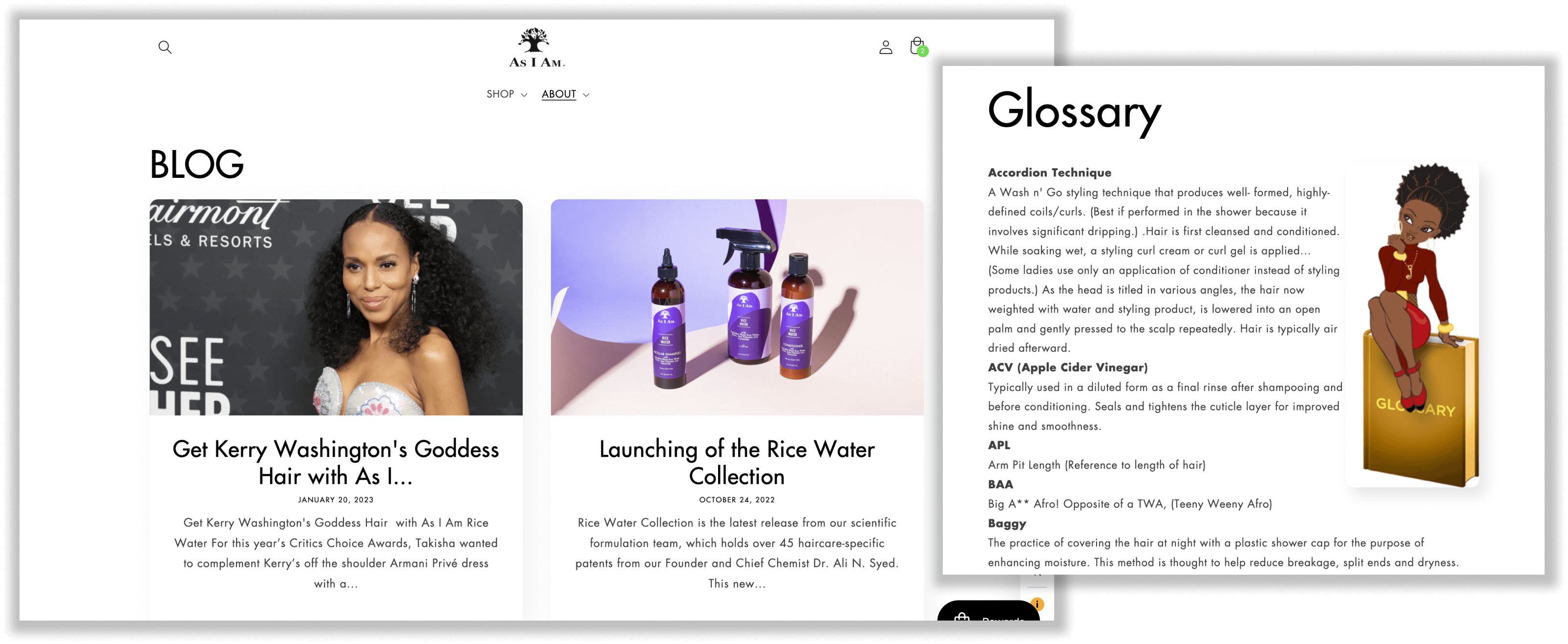
As I Am’s blog has a variety of content that is meant to educate, entertain, and inspire its customers. The brand takes its value-add marketing even further with its glossary of hair-inspired terms. This ensures that no matter where you’re at on your haircare journey, you can understand the product descriptions and find what’s best for you and your hair needs!
As we’ve mentioned, haircare is a journey and for women of color, often an emotional and sometimes intimidating one. This is why As I Am offers in-depth tutorials on its YouTube channel. From hair and scalp care using its products to hair styling techniques, customers can find answers to any questions they may have in these valuable step-by-step guides.
When you can become a one-stop shop for all of your customers’ questions through your content, you are on your way to retaining them for the long haul.
Always say thank you to your customers
One of the best ways to keep customers coming back is to show them how much they mean to you. There are many ways to show your customers that you value them, like with loyalty programs or beautiful packaging, but sometimes a simple thank-you is all it takes.

Sending personalized thank-you notes after customers make purchases is a great way to enhance the customer experience and stand out in your customer’s mind with an elevated unboxing experience. You can set up thank-yous as an automated email, a dedicated webpage, or you can add a personalized touch with a hand-written note like this example from The Breakfast Pantry in your customer’s actual shipment.
When a customer feels appreciated, they’ll be more willing to make another purchase.
Start retaining your customers for long-term success
There are several ways to begin retaining your customers for the long term. Whether you offer a niche product to a specific customer segment, or you have a strong value-added content marketing strategy, there are many things you can do to keep your customers around!
Test out a few of these strategies with your brand and watch your retention rates rise.
Editor’s Note: This post was originally published on March 12, 2020 and was updated for accuracy and comprehensiveness on September 5, 2023.








